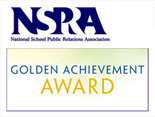What Is Cyberbullying?
“Whether it’s creating a fake social media page (i.e., Twitter or Facebook) to impersonate a fellow student, repeatedly sending hurtful text messages and images, or posting cruel comments on the Internet, cyberbullying can have a devastating effect. Nasty comments, lies, embarrassing photos and videos, and snide polls can be spread widely through instant messaging (IM) or phone texting, and by posts on social networking sites. It can happen anytime — at school or home — and can involve large groups of kids. The combination of the boldness created by being anonymous and the desire to be seen as “cool” can cause a kid who normally wouldn’t say anything mean face-to-face to show off for other kids.”
Source: Common Sense Media
The Short Definition
Cyberbullying is the use of electronic devices and media to repeatedly harass, threaten, humiliate and otherwise hassle people.
Why It Matters
“Nothing crushes kids’ self-confidence faster than humiliation. And just imagine a public humiliation sent instantly to everyone they know. Sadly, hurtful information posted on the Internet is extremely difficult to prevent or remove, and millions of people can see it. Most cyberbullying happens when adults aren’t around, so parents and teachers often see only the depression or anxiety that results from being hurt or bullied. This emotional damage can last a lifetime.”
Source: Common Sense Media
Examples of Cyberbullying
A student creates a fake profile on a social networking site using another student’s real name, photo, and other personal information. As a result, that impersonated student starts getting random hateful, inappropriate messages and comments from people.
Students post hateful messages/rumors about another student to a Facebook burn page . Even though the rumors aren’t true, classmates see the posts and believe them to be true. As a result, the student is ostracized.
The above students are victims of cyberbullying.
Stats
- 42% of teenagers with tech access report being cyberbullied over the past year.
- 69% of teens own their own computer or smart phone. Of those teens, 80% are active on social media sites.
- The average U.S. teen sends 420 texts each week.
- Girls aged 14-17 send an average of 100 texts a day.
- 7.5 million Facebook users are under age 13 – the required age to have an account.
- 81% of youths say bullying online is easier to get away with than bullying in person.
- 3 million students are absent from school each month because they fear bullies.
- 90% of teens that witness online bullying say they ignore it.
- Only 2 in 5 victims will tell their parents.
Source: OnlineCollege.org
California Law
- SB 1177 – September 2014 – Student Online Personal Information Protection Act (SOPIPA) – The most comprehensive industry-targeted student-data-privacy legislation in the country. The law, spearheaded by Common Sense CEO Jim Steyer, is the most aggressive legislative effort to date aimed at protecting the privacy and security of student data. The law is unique in that puts the responsibility for protecting student data directly on industry by expressly prohibiting education technology service providers from selling student data, using that information to advertise to students or their families, or “amassing a profile” on students to be used for noneducational purposes. Law took effect in January 2016. (Source: Commonsensemedia.org)
- AB 1584 – September 2014 – Existing law prohibits a school district from permitting access to pupil records to any person without parental consent or without a judicial order, except to specified persons under certain circumstances, including to a contractor or consultant with a legitimate educational interest who has a formal written agreement or contract with the school district regarding the provision of outsourced institutional services or functions by the contractor or consultant.
- AB 1442 – September 2014 – Existing law requires school districts to establish, maintain, and destroy pupil records according to regulations adopted by the State Board of Education.
- This bill would, notwithstanding that provision, require a school district, county office of education, or charter school that considers a program to gather or maintain in its records any information obtained from social media, as defined, of any pupil enrolled in the school district, county office of education, or charter school to first notify pupils and their parents or guardians about the proposed program, and to provide an opportunity for public comment at a regularly scheduled public meeting before the adoption of the program.
- AB 256 – Chapter 700 – October 10, 2013 – Clarifies the role of school in intervening in bullying cases that originate away from school. Bill defines “electronic act” the creation and transmission originated on or off the school site.
- AB 1156 – July 2012 – Outlines a number of provisions regarding bullying including identification of negative outcomes associated with bullying; duties of school personnel regarding bullying; and accommodations of victims of bullying.
- AB 9 (Seth’s Law) – January 2012 – Even with AB 746 in place (see below), California legislators recognized the need to have anti-bullying policy in place to protect LBGTQ youth from harassment, intimidation, and bullying. To find resources for supporting LBGTQ youth, visit the Digital ID project.
- AB 746 – July 2011 – Language of the law includes student behaviors on social networking web sites: “Under existing law, bullying, including bullying committed by means of an electronic act, as defined, is a ground on which suspension or expulsion may be based.”
- AB 86 – January 2009 – One of the first laws in the country to deal directly with cyberbullying. Gives school administrators the authority to discipline students for bullying others offline or online.
Federal Law
CIPA – Children’s Internet Protection Act (2001)
Enacted by Congress in 2000 to address concerns about children’s access to obscene or harmful content over the Internet. As of July 2012, CIPA requirements were revised to require that any school district applying for E-Rate funding* must show how they are actively teaching all students Internet safety and digital citizenship. The topics that must be covered are: Appropriate online behavior (building a positive digital footprint; respecting intellectual property), safety and privacy, and cyberbullying awareness and response
*EGUSD uses E-Rate funding for:
- Telecommunications – Voice communications, voice mail, or messaging.
- Internet Access – Internet access and the power of video conferencing (making global connections possible from all school sites).
- Infrastructure – Extending connectivity down to every classroom.
As with any federal program that comes with funding, our district-wide implementation of CIPA requirements is subject to federal audits.
COPPA – Children’s Online Privacy Protection Act (1998)
Federal law created to protect the privacy of children under 13. The Act was passed by the U.S. Congress in 1998 and took effect in 2000. COPPA is managed by the Federal Trade Commission. COPPA imposes certain requirements on operators of websites or online services directed to children under 13 years of age, and on operators of other websites or online services that have actual knowledge that they are collecting personal information online from a child under 13 years of age.
PPRA – Protection of Pupil Rights Amendment (1978)
Federal law that affords certain rights to parents of minor students with regard to surveys that ask questions of a personal nature. The No Child Left Behind Act of 2001 contains a major amendment to PPRA that gives parents more rights with regard to the surveying of minor students.
FERPA – Family Educational Rights and Privacy Act (1974)
Federal law that protects the privacy of student education records. The law applies to all schools that receive funds under an applicable program of the U.S. Department of Education.
Revision – School official exception (2008)
Permit educational institutions to disclose educational information and personally identifiable information without prior consent to contractors, volunteers or other non-employees peforming services for the educational institution.
Revision – Audit or evaluation exception (2011)
Educational institutions are now permitted to adopt a limited directory information policy that allows the schools to disclose designated information to designated parties. Educational institutes however, must provide notice to parents or eligible students.
Leading Research Institutes
The Cyberbullying Research Center is dedicated to providing up-to-date information about the nature, extent, causes, and consequences of cyberbullying among adolescents.
PEW Internet and American Life Project – Teens, kindness and cruelty on social network sites.
National Anti-Cyberbullying Campaigns
The Great American NO BULL Challenge – The first, student-led National video contest and Teen Video Awards show dedicated to bullying prevention and promoting empathy, respect, and inclusive communities using the power of music and the magic of film-making.
Not in Our School | Not in Our Town – Across the country, students and teachers are sharing stories, joining together and taking action to create safe schools, free from stereotypes, intolerance, and hate.








